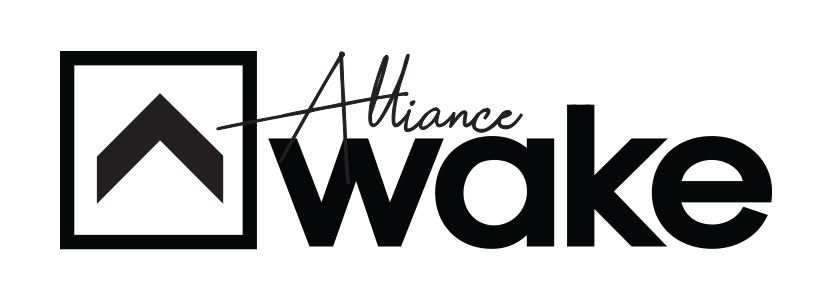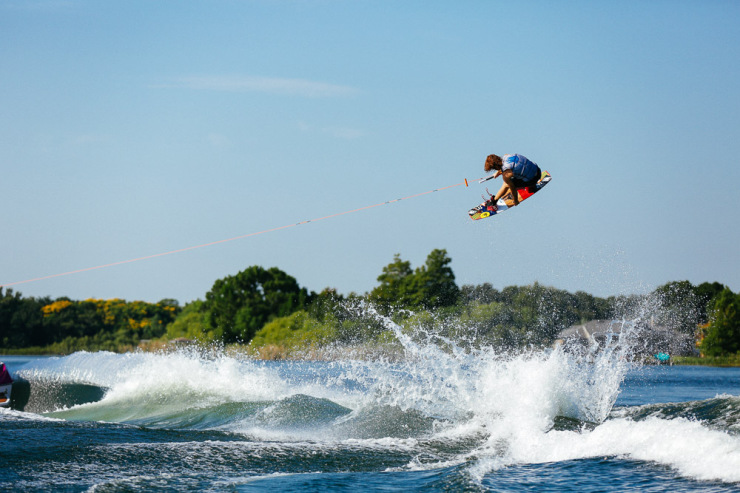Come Correct – How to Hit a Double Up
Hitting double ups is an art form and that can change based on a number of things: the type of boat, the size of the wake, the driver, etc. Here’s what I tell people learning double ups for the first time.
Edging in:
As the boat finishes the turn and heads for the original set of rollers, you want to be away from the wake and ready to edge in. The easiest way to start timing double ups is to start your edge into the wake when the boat hits the second roller. The goal is to hit the highest point of the rollers converging, but too early is better than too late because you’ll still get a good piece of the double up. If you’re too late you’re gonna miss the double up entirely.
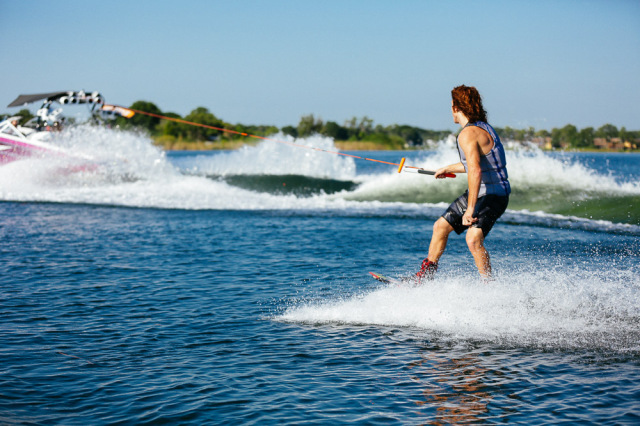

One of the hardest parts of edging in is getting used to going over the rollers while on edge yourself. It can throw you off, but just pump over them and focus on your timing with the double up and you’ll be good.
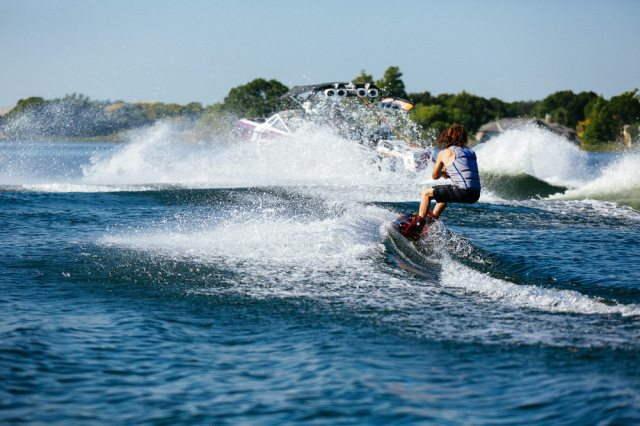

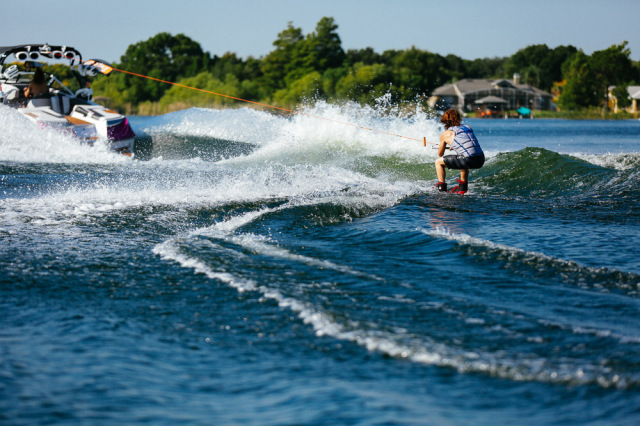
Getting the pop:
We all want to hit double ups because we want more air, right? The key to getting that air and staying in control is to maintain a strong edge (so you clear the wake) and a strong body position (so you don’t get bucked out of control). Keep that handle in close and low by keeping your elbows at your hips as you’re on edge. Stay strong through the top of the wake and the double up will boost you. A lot of riders learning double ups have a tendency to loosen their body position as they hit it, but don’t do that; it will just buck you forward and out of control. I always recommend riders have a couple solid grabs dialed wake-to-wake before trying double ups. If you have grabs you can hold for a while then you have better body and rope control, which puts you in a better position for learning double ups.
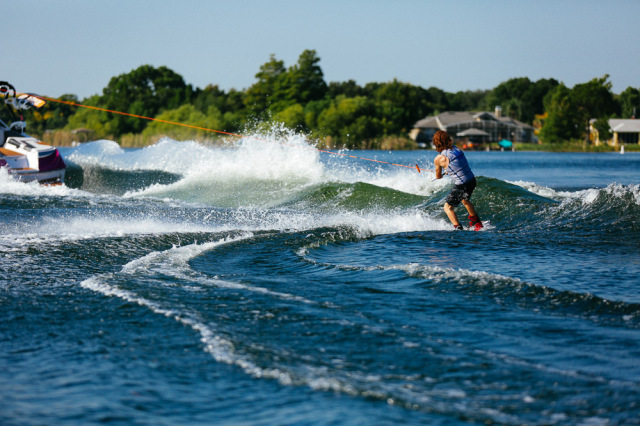

Going through the air:
What you do while you’re in the air depends on the trick you want to do. I recommend learning straight airs and grabs off the double up first before trying something else. The key, again, is maintaining a strong body position and rope control. If I feel like I’m coming up short and going to be close to casing the wake, I’ll tug on the handle and use the rope to help get me into the down transition for landing. If I know I’m not going to clear it and case really hard, or if I just get bucked off the double weird and am out of control, I’ll chuck the handle and take the crash.

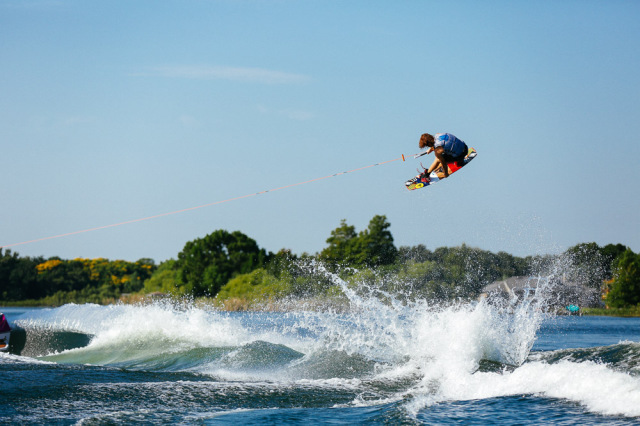
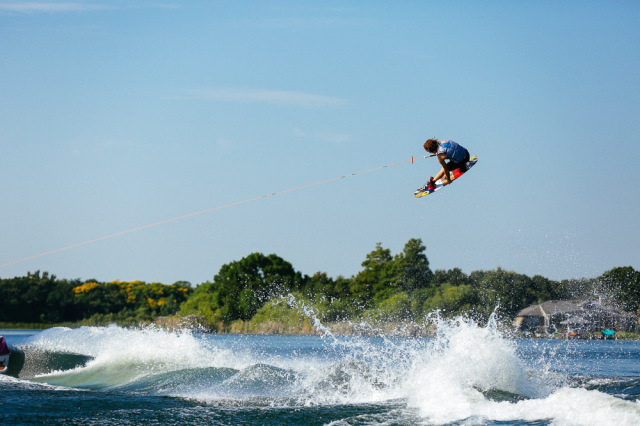
Landing:
The landings are another great benefit of the double up because often times you land on a really smooth, soft transition. Just like with any other wake jump, extend your legs as you approach the water and absorb the landing with your legs. Keep the handle close so you can use your arm to absorb the rope going taught again. With double ups this is really important because depending on how big you go and what you do with the rope in the air you can have quite a bit of slack when you land. If you land with your arms straight out and in a bad body position the rope will get yanked out of your hand.
Other things to consider:
If you’re riding behind an older boat or one with a smaller wake but want more air, try hitting the third roller/double up. It’s steeper and you have to be better at pumping over the rollers while on edge to hit it, but it will give you the most air.
If you’re still uncomfortable with the size of double ups try have the boat turn away while making the setup roller. This will decrease the size of the roller significantly and make the double up smaller and easier to manage.
Other than that, hang on and enjoy the ride! Double ups are a lot of fun and once you learn them I suggest you hit them every time you ride. Rather than do a turnaround, why not just have the boat drive a double up so you can get some air and work on some new tricks?
